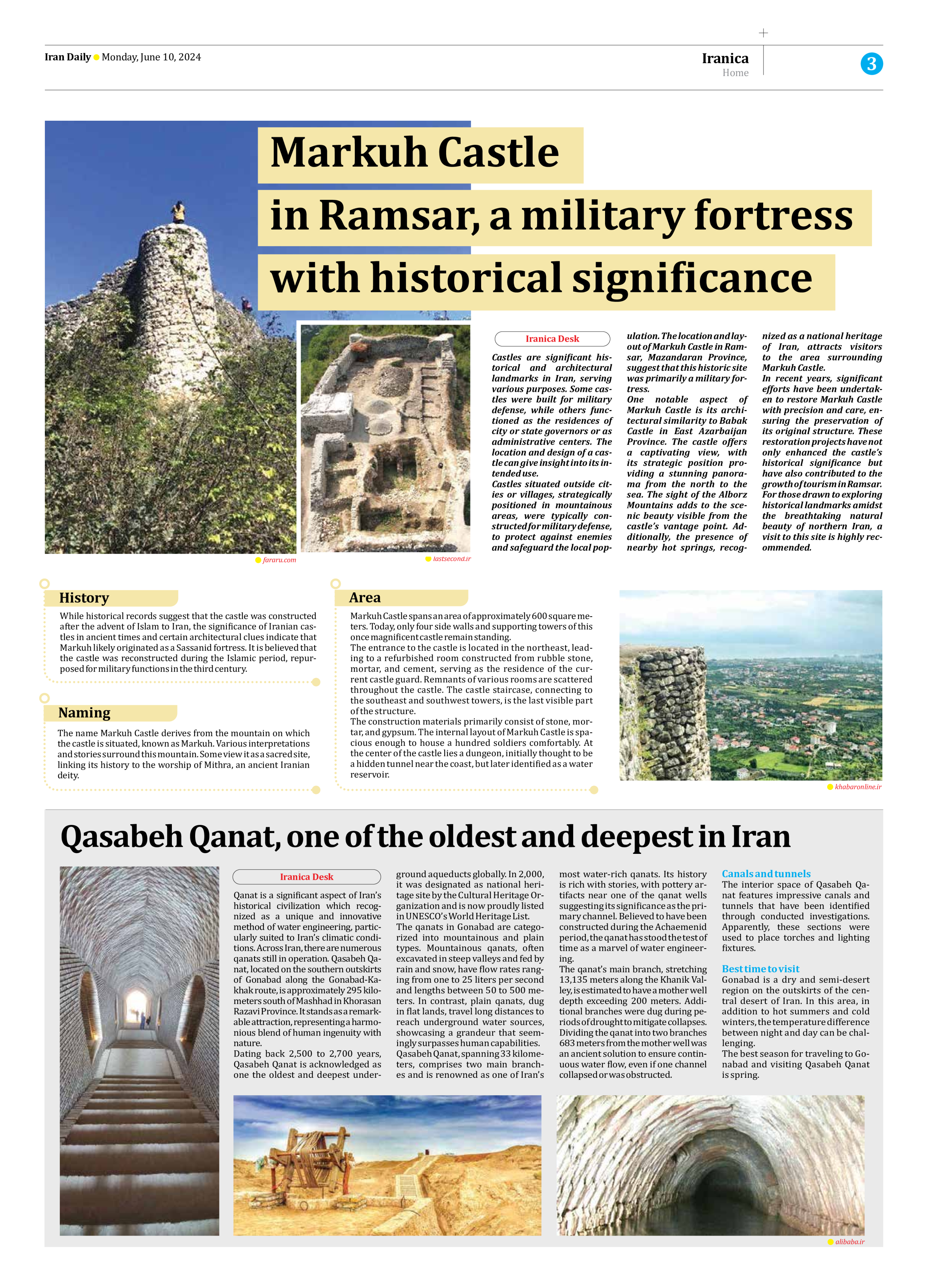
Qasabeh Qanat, one of the oldest and deepest in Iran
Qanat is a significant aspect of Iran’s historical civilization which recognized as a unique and innovative method of water engineering, particularly suited to Iran’s climatic conditions. Across Iran, there are numerous qanats still in operation. Qasabeh Qanat, located on the southern outskirts of Gonabad along the Gonabad-Kakhak route, is approximately 295 kilometers south of Mashhad in Khorasan Razavi Province. It stands as a remarkable attraction, representing a harmonious blend of human ingenuity with nature.
Dating back 2,500 to 2,700 years, Qasabeh Qanat is acknowledged as one the oldest and deepest underground aqueducts globally. In 2,000, it was designated as national heritage site by the Cultural Heritage Organization and is now proudly listed in UNESCO’s World Heritage List.
The qanats in Gonabad are categorized into mountainous and plain types. Mountainous qanats, often excavated in steep valleys and fed by rain and snow, have flow rates ranging from one to 25 liters per second and lengths between 50 to 500 meters. In contrast, plain qanats, dug in flat lands, travel long distances to reach underground water sources, showcasing a grandeur that seemingly surpasses human capabilities.
Qasabeh Qanat, spanning 33 kilometers, comprises two main branches and is renowned as one of Iran’s most water-rich qanats. Its history is rich with stories, with pottery artifacts near one of the qanat wells suggesting its significance as the primary channel. Believed to have been constructed during the Achaemenid period, the qanat has stood the test of time as a marvel of water engineering.
The qanat’s main branch, stretching 13,135 meters along the Khanik Valley, is estimated to have a mother well depth exceeding 200 meters. Additional branches were dug during periods of drought to mitigate collapses. Dividing the qanat into two branches 683 meters from the mother well was an ancient solution to ensure continuous water flow, even if one channel collapsed or was obstructed.
Canals and tunnels
The interior space of Qasabeh Qanat features impressive canals and tunnels that have been identified through conducted investigations. Apparently, these sections were used to place torches and lighting fixtures.
Best time to visit
Gonabad is a dry and semi-desert region on the outskirts of the central desert of Iran. In this area, in addition to hot summers and cold winters, the temperature difference between night and day can be challenging.
The best season for traveling to Gonabad and visiting Qasabeh Qanat is spring.







